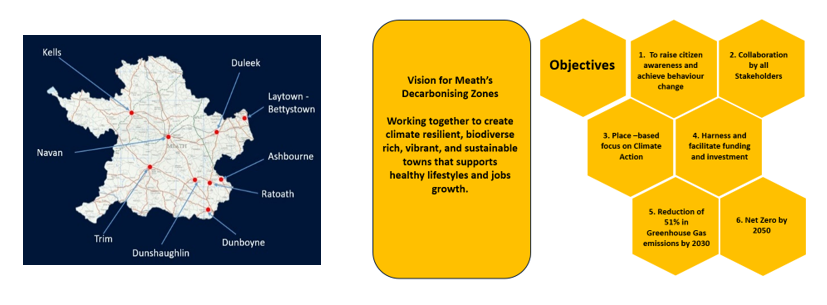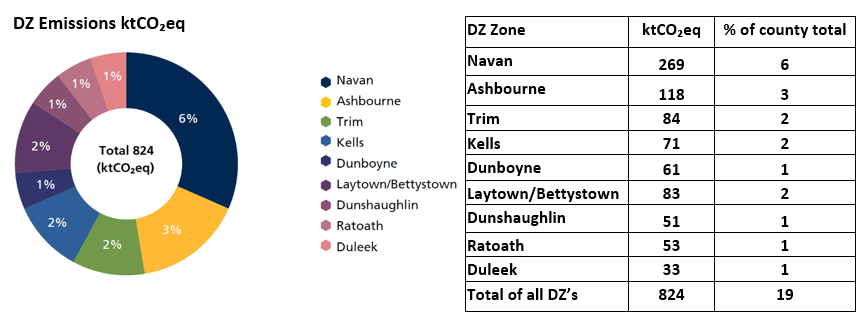Meath County Council have identified nine DZs. These different urban areas vary in terms of their location and emission profiles.
Decarbonising Zones
Decarbonising Zones
A Decarbonising Zone (DZ) is a chosen area where local authorities and communities work together to reduce the amount of carbon produced by their everyday activities. By looking within the community for ways to live, work and play more sustainably, these zones can find local solutions to global problems, such as reducing greenhouse gas emissions, improving air quality, saving energy and reducing waste.

Meath’s Decarbonising Zones provides a forum for communities to work together, learn from, and inspire each other to cut local emissions. In turn, these efforts contribute to the global goal of reaching net zero emissions by 2050. It is important to note that as part of the place-based focus, the delivery of climate action offers opportunities beyond emission reductions, for example, the creation of places that are sustainable, resilient and inclusive where people enjoy living, working and doing business.
Baseline Emission Inventories have been undertaken on all nine DZs, this will assist in identifying climate action at a local/community level, where a range of climate mitigation, adaptation and biodiversity measures and action owners are identified with the aim of addressing local low carbon energy, greenhouse gas emission and climate needs to contribute to national climate action targets. The baseline year used to determine the DZ emissions was 2018, which is aligned to the County-wide baseline emissions inventory (BEI).

Next Steps
The next step for Meath County Council, is to co-create individual DZ Implementation Plans, in consultation with the local communities, and stakeholders within each of the Decarbonising Zones. This includes:
- Developing a Public Engagement Plan.
- Establishing key stakeholder groups within each Decarbonising Zones made up of representatives from the local community, businesses, transport and, energy sectors.
- Co-creating a list of prioritised actions, expanding on the strategic interventions and register of opportunities.
- Developing a governance framework for the Decarbonising Zones.
- Supporting the delivery of the Implementation Plan to achieve the Decarbonising Zone vision for 2030.